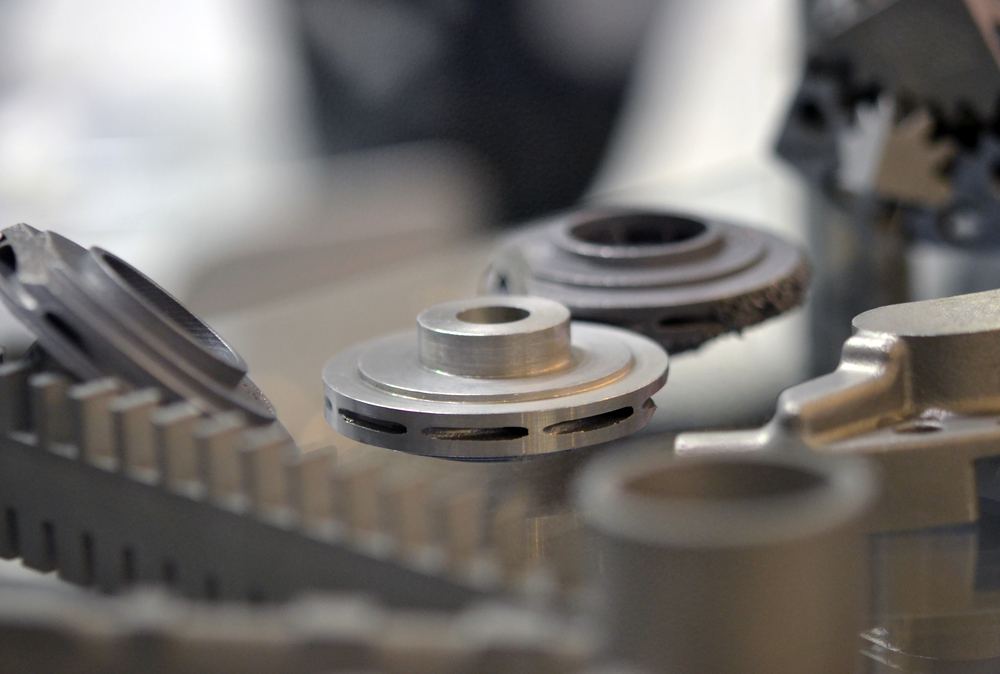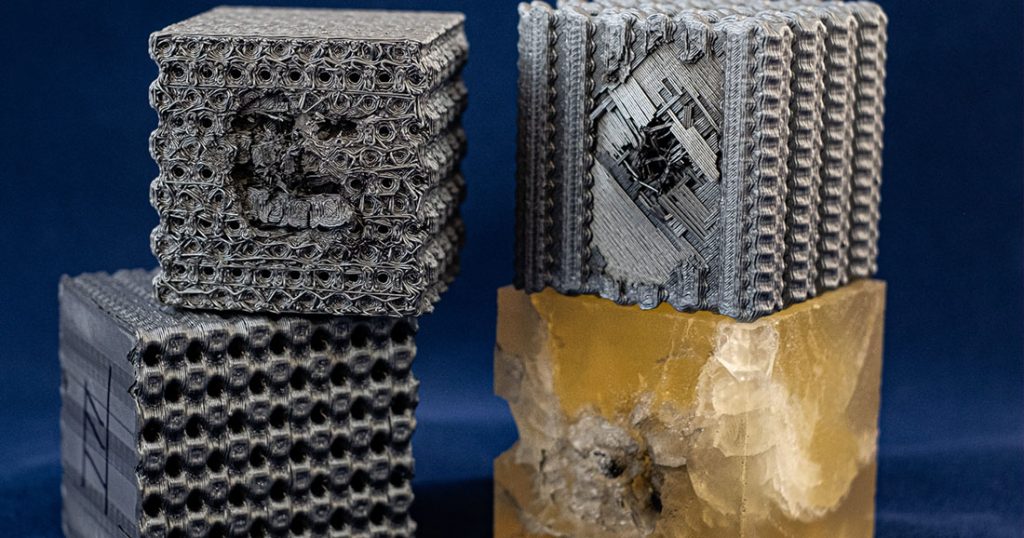
Under pressure, polymers build themselves a better future
Mixed results for plastics
A true paradigm shift is occurring in businesses. 3D printers are following Moore’s law, based on the Intel founder’s prediction that computers would increase in power every 2 years from the 1970s onwards. Printers are becoming more sophisticated, but that is not the only reason. Many industrial groups have understood the value and therefore the profits they can derive from taking a close interest in additive manufacturing. Consequently, the market is becoming more structured, start-ups are growing and investments are pouring in. According to analysts, the professional market is expected to double in size approximately every three years. It tripled in size over the course of 2019 alone, and 2020 is expected to see a similar development.
Many different materials can be used in 3D printing. Polymers do not have a monopoly, particularly in industry where metals, ceramics and even concrete (or pizza dough!) all have their uses. Unlike the plastics intended for consumer printers, polymers have had a hard time finding their place in the professional market. This is due to the relatively small number of polymers that can be used for printing. For a long time, only PLA and ABS could be used, and they were almost only used for prototyping.

For a long time, PLA and ABS were the materials of choice for 3D printing, but they were mostly confined to prototyping |
Polymers look to make a better impression
Plastics lagging behind? That was somewhat true at one point in time, but polymer manufacturers soon realised that was the case and made considerable efforts to ensure that they did not miss out on this revolution. In their defense, it should be noted that machine manufacturers initially made no efforts to encourage them to seek out new developments. The manufacturers’ business practices most often relied on the use of proprietary materials. In other words, their machines were only compatible with the polymers they sold. Although some brands sold materials with various characteristics (hard, soft, translucent, chemically resistant, biocompatible, etc.), there were only a handful of thermoplastic polymers. For specific industrial applications, and more specifically in the case of high-performance parts such as those found in cars and aircraft, and even for less specific applications, professionals were frustrated by the limited choice available to them. And yet, demand was high.
Plastics, the family helps out
Things have moved very fast for polymers in recent years. Although PLA remains the general public’s favourite, the range available to professionals has grown considerably. Polyether ether ketone (PEEK), polyamide, polycarbonate, acrylonitrile styrene acrylate (ASA), polyphenylsulfone (PPSF/PPSU), polyethylene terephthalate glycol-modified (PETG), polystyrene, and more, are now among the polymers which have found a use in printing processes. Polyetherimide, for instance, is one of the darlings of the medical industry thanks to its biocompatibility. PEEK’s amazing ability to withstand high temperatures has enabled it to take a foothold in the aviation and space industries.
|
This is just the beginning, as printer manufacturers are also perfecting their technologies. Plastics are now moving beyond prototyping to custom-made parts. According to specialists, this will be one of their main markets in the years to come. The first industries to benefit from this new direction will be the aeronautics and automotive industries which are installing more and more printers in their factories to produce limited runs of parts. Even better, the latest generations of printers can print composite materials (click here to read our interview with Roboze). For many research centres, this area has become as exciting as pure research. |

The arrival of high-performance polymers such as PEEK has helped 3D printers gain more traction among manufacturers. The fourth industrial revolution is underway! |
A giant printer creates buzz
It has to be said that American universities are garnering the most attention. Their communication efforts and their ability to generate hype when their research leads to concrete applications should also be recognised. Last autumn , for example, the University of Maine unveiled its giant printer that can print objects up to 30 metres long. To demonstrate their expertise, they filmed the machine printing an 8-metre-long boat. Although the university designed the printer, the material used was developed by the Oak Ridge National Laboratory.

An 8-metre-long boat was recently printed using a polymer made up of cellulose nanofibers and ABS in just 72 hours |
It is a composite based on cellulose nanofibres embedded in ABS. This partially bio-based material is very light, rigid and recyclable. According to their inventors, the nanofibres used are stronger than steel and stiffer than Kevlar. This "green" formulation could reduce the carbon footprint of printed products by 90%. Finally, the boat was printed in just 72 hours, proof if ever such were needed of the progress made in the area of printers, as such a result would not have been possible 5 years ago. |
Rice University in Boston also made a big splash in recent months by announcing that its researchers have created a new printable polymer that is light as a feather and strong as steel. In order to have those characteristics, the polymer must be printed along a tubular structure.

This new type of printable polymer is better able to withstand bullets than steel |
As for the material, all we know is that it is a carbon nanotube composite. The scientists printed two cubes to test its strength: the first a very compact monoblock, and the second a tubular structure. They then subjected them to the impact of a revolver bullet. The first cube was badly damaged while the second stopped the bullet at the second composite layer. This performance can be explained by the material’s chemical composition and, as the experiment shows, its tubular structure which enables the object to compress and thus absorb the kinetic energy of an impact. The military applications of this new material seem obvious.

The wheel of the future will be printed at the same time as the tire. At least, that is the vision of equipment manufacturer Michelin. |
A lack of air is no problem for polymersRemaining among the world leaders requires constant innovation and daring to dream the impossible. This certainly seems to be direction taken by French tire manufacturer Michelin which recently unveiled the first fully printed recyclable tyre. The materials used are ordinary, to say the least, given that the tire is made of bamboo, paper, wood, recycled plastic waste and orange peel. |
Concept Vision, as it is known, is an airless, puncture-proof tire with a printed honeycomb structure. The tread, which is also 3D printed, is interchangeable, and can therefore be replaced depending on the weather and the type of road travelled. However, the replacement tires must have been printed beforehand or at a service station equipped with a 3D printer. This innovation will not see widespread use in the very near future, but things could change very quickly at the rate things are evolving in the automotive field, and in 3D printing.
Plastronics: plastics shake out their chips
Plastronics, the recently-developed technology making it possible to mold electronics into plastic parts, have recently become printable. Once again, the Massachusetts Institute of Technology (MIT) is behind this technological feat. Its researchers have successfully printed objects made up of fibres containing several interconnected materials. The filament consists of a structure of conductive materials under a polymer coating. In addition to the filament, they had to design a printing nozzle that would melt the polymer enough for it to stick but not so much that it would affect the electronic components. In their demonstration, the MIT team printed a transparent aircraft wing containing light-emitting components.
|
This technique is expected to have applications in the medical field, for instance, for printing prostheses perfectly adapted to the patient’s anatomy containing electronics used to monitor and control the new limb. The prosthesis could also evolve over time. Some are already calling this 4D printing.
|

MIT has taken up the challenge of printing electronics and polymers in a single operation. |





